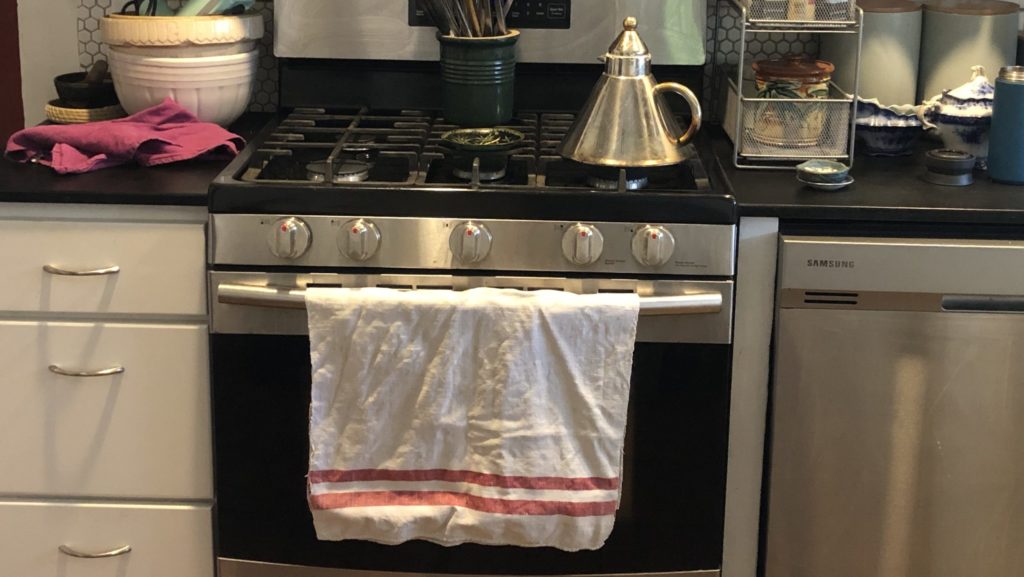“Haptic & Hue” is a deeply researched, beautifully written, edited, and produced podcast about textiles and the people who make them.
No ads, no cheesy banter, no up-tempo Muzak.
Rather, it’s fascinating, in-depth stories on subjects you had no idea would grab you.
British host Jo Andrews, a hand-weaver herself, conceived the idea in 2020. She wondered: How have textiles and fiber changed and formed what we know of the human story? For too long, she was convinced, such information had been overlooked and ignored.
Now in its seventh season, “Haptic & Hue” is far from being of interest to women alone. One episode brings us to the backrooms of London’s Savile Row, known worldwide for its bespoke men’s tailoring. There’s a piece on the making of sailcloth.
More to the point, pondering the essential place that cloth, textiles, and sewing have held for millennia in world culture and history gives rise to stories that would intrigue any thinking person.
Australia’s Convict Quilt, also known as the Rajah Quilt, for example, is named after the ship on which 180 female convicts and 10 children were transported in 1841 from England to Australia to serve their terms. Andrews speaks to the co-author of a book, “Patchwork Prisoners,” which has uncovered the names and traced back the histories of some of these women. Along the way, we learn of the penal system, of mothers ripped from their children, of how the gorgeously complex, intricately constructed quilt disappeared for 145 years, was found in a Scottish loft in 1987, and now occupies a place of pride at the National Gallery of Australia.
There are episodes on the samplers embroidered by 19th-century British orphans that served as resumés when the girls went job-hunting; the Victoria and Albert Museum curator who lovingly presides over the costumes of the famed Ballets Russes; the mid-century modern textile revolution in Great Britain in which designers like Lucienne Gray and Nicola Wood made bold, futuristic fabrics that are still fresh today.
Other episodes include “The Garment That Sweeps Through History: The Everlasting Cloak,” “Flax is Back! The Great Linen Revival,” and “The Long and Winding Road of Lace.”
A recent episode describes the Kantamanto market, in Ghana’s capital, Accra, where tons of used clothing from around the world are shipped — to increasingly disastrous effect.
Who knew the areas of fiber and textile range so widely? Thread, string, yarn, rope. Needles, stitches, dyes, costume design, wool, silk, African wax cloth, tartan.
Maybe the reason “Haptic & Hue” appeals is that those who love the study and making of beautiful clothing, tapestries, and textiles are, almost inevitably and in the best possible way, obsessives.
One of my favorite episodes, from March 6, 2025, is called “Pleats Please: the Story of the World’s Oldest Fashion Technique.”
The episode explores the 1913 excavation site at Tarkhan in Egypt, where the world’s oldest surviving garment was found: a dress dating back to at least 3,000 BC that featured knife pleats down the bodice and sleeves.
Another segment features Leann Kanda, a fashionista and associate professor of behavioral ecology. Kanda devoted 10 years to the attempt to duplicate the super-fine pleats in the Fortuny Delphos gown, a garment that was all the rage worldwide during the 1930s and whose secrets went to the grave with its creators, Henriette Nigrin and her partner (later husband) Mariano Fortuny y Madrazo.
Andrews visits an expert modern pleater, George Kalajian of Tom’s Sons International Pleating, a family-run store in New York’s Garment District founded in 1931. Kalajian started learning the trade at age 7. His Syrian grandmother, whose hands were “like gold,” passed down ancient techniques then swore her descendants to secrecy.
Each episode is accompanied by photographs. If you think pleats are simple, take a look at the Sunburst Pleat, the Fantasy Pleat, and the Zebra Pleat, all from Tom’s Sons: Fantastically complex creations that seem to have been dreamed up by a cross between M.C. Escher and an origami master.

On the podcast page, links are included to the websites and social media accounts of the people quoted or profiled in each episode. Thus, you learn of fashion historians, population biologists, Bronze Age textile specialists, academic psychologists, and investigative journalists.
You learn of arcane museums: The Petrie Museum of Egyptian and Sudanese Archaeology in London, or the Maryhill Museum of Art in Washington state.
The podcast features a book of the month. You might find “Mauka to Makai: Hawaiian Quilts and the Ecology of the Islands,” or “The Fabric of Civilization: How Textiles Made the World.”
For £50 (about $67) a year, you can become a “friend” of “Haptic & Hue” and obtain access to additional features, among them a series called “Travels with Textiles” with editor and producer Bill Taylor.
The producers have also put together reasonably priced guides to the best and most interesting textile-based museums, studios, galleries, and shops in various cities: Dublin, Venice, Paris, London.
Plus, each month, Jo (as I’ve come to think of her) offers a giveaway: it might be a set of three hand-embroidered handkerchiefs, a pair of lambswool socks, or an out-of-print illustrated book.
Not long ago, I won a giveaway! My kitchen now boasts a large dish towel, hand-woven at least 75 years ago from sturdy Hungarian hemp.

